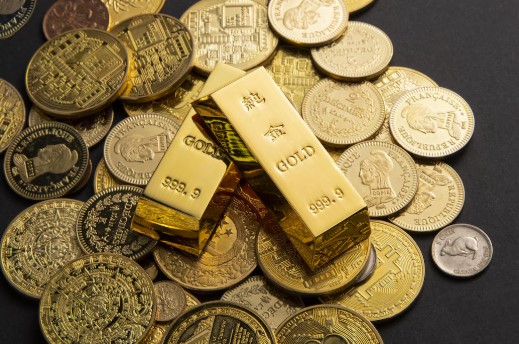In 2024, global gold demand rose at a margin of 1% to 4,899 tonnes, the highest in over a decade, according to the World Gold Council. This was driven by central banks and retail investors expecting economic slowdowns and persistent inflation.
With interest rates rising, geopolitical tensions and recession fears still looming, the question remains, is gold investment 2025 still the safe haven it once was? Or is it time to look elsewhere for shelter? Let’s find out!
Why Investors Still Love Gold
Gold has been a symbol of stability for centuries. But in financial terms, why does it still attract capital in uncertain times?
- Physical Asset, Real Value: Unlike equities or cryptocurrencies, gold is tangible and universally recognised as valuable.
- Trust Across Borders: Central banks continue to hoard gold, buying over 1,000 tonnes annually from 2022 to 2024, reinforcing trust among retail investors.
- Protection During Crises: Be it during the 2008 financial crisis, the 2020 pandemic, or the inflationary shocks after 2022, gold has consistently held up. For example, the metal had outperformed equities by 20% in 2024.
In a world driven by data, sentiment and speculation, gold offers a sense of security rooted in centuries of history.
Inflation Hedge or Just Hype?
Gold has long been seen as an inflation hedge, but the real test is how it performs when prices rise. In recent years, central banks globally struggled to tame inflation and investors looked for protection. Here’s what happened:
- During the 2022 and 2023 inflation surge, gold prices rose 13.2% cumulatively, as seen in the chart below.
- Even in early 2024 when global inflation eased to around 4.1%, gold remained steady.
- Unlike equities, which react sharply to interest rate changes, gold is less reactive and more defensive. By the end of 2024, gold delivered over 20% returns amid fluctuating global rates, while equities like Nifty 50 and Sensex saw around 12% gains with higher volatility.
No asset is a perfect inflation hedge, but gold’s performance in 2025 so far suggests it’s still the best of the bunch. It’s not about big gains, it’s about preserving purchasing power.
Gold vs Equity: What’s Better in 2025?
Both gold and equity have their place but the key is knowing when and why to use each.
| Metric | Gold | Equity |
| Risk | Low to moderate | High |
| Return potential | Steady, moderate | High, but volatile |
| Response to inflation | Positive | Often negative |
| Liquidity | High | High |
| Use during crisis | Reliable fallback | Risk-prone asset class |
As per 2024-25 data, gold emerged as the best performer with 41% returns in USD and 33% in INR, at US$3,125/oz (₹88,946 per 10g). Indian equities (Nifty 50) returned around 6.8% in a year of global slowdown. While equities drive long term growth, gold is the preferred asset in uncertain times. Smart portfolios in 2025 are balancing both gold vs equity for resilience and wealth creation.
What is the Best Way to Invest in Gold India 2025?
Gold investment today is more accessible and diversified than ever. Physical gold is no longer the only route and perhaps not even the most efficient one.
Gold ETFs
Gold ETFs allow investors to gain exposure to gold prices without owning the metal physically. A single unit of gold ETF generally equals 1gm of physical gold. They generally offer relatively higher liquidity compared to other gold-related investment options, making them suitable for those seeking ease of entry and exit.
Gold Mutual Funds
These funds invest in gold-related assets, including gold ETFs and mining company stocks. While they may offer broader diversification, they generally tend to be less liquid than ETFs and may carry slightly higher expense ratios.
Digital Gold
Buying gold digitally is the new norm. Investors can buy, sell and store gold virtually backed 100% by physical reserves, making it a convenient option for small and mid level investors.
Physical Gold (Jewelry, Bars, Coins)
Still emotionally significant for many Indian households, physical gold remains popular. But buyers must account for making charges, purity certification and storage concerns.
So if you’re thinking, what’s the best way to invest in gold India 2025?
Each option has its own advantages, so choose the right one that complements your individual investment goals and preferences.
Is Gold Still “Safe” in a Dynamic Market?
Gold investment in 2025 is still in focus amidst global uncertainty. While not immune to volatility, gold is a trusted inflation hedge and portfolio stabilizer. Several macro factors support its “safe haven” status:
- Post Pandemic Imbalance: Global GDP growth slowed to 3.1% in 2025, reflecting uneven recovery and economic fragility.
- Geopolitical Tensions: With over 110 armed conflicts ongoing worldwide as of 2025 and rising trade tensions across major economies, geopolitical risk remains high generating demand for gold as a potentially safe asset to invest in.
- Monetary Policy: Central banks are still fighting inflation, US inflation hit 6.2% in 2023 and the Fed has been hiking rates.
Experts recommend capping gold exposure at 10–15% of a portfolio for optimal diversification without limiting growth.
Note: This information is for general awareness and should not be considered financial advice. Investors are advised to consult a professional before making investment decisions.
Conclusion
Gold in 2025 is not obsolete. It’s evolved, from vaults to apps, from necklaces to bonds. While equities chase growth, gold gives stability. As investors hedge against inflation and volatility, gold is not just surviving, it’s adapting.
And with seamless trading platforms, you can add gold to your portfolio in just a few clicks.
DISCLAIMER: The information given in this blog is for educational purposes only. Any content of this blog is not investment advice.
- India’s Startup Funding Rebounds: Sectors Leading the 2025 Recovery - November 18, 2025
- Nifty & Sensex — how to get live updates quickly - November 4, 2025
- Not Diamonds, Gold is the Indian Woman’s Best Friend Forever - October 30, 2025





